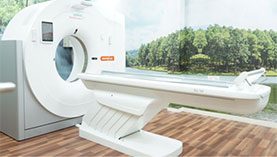About
Vascular Surgery focuses on diagnosing and treating diseases of the vascular system, which includes arteries, veins, and lymphatic vessels. Here are some key aspects of vascular surgery:
Common Conditions Treated
Aortic Aneurysms: Bulging or weakening of the aorta, which can be life-threatening if it ruptures.
Peripheral Artery Disease (PAD): Narrowing of the arteries in the limbs, often leading to pain and mobility issues.
Carotid Artery Disease: Narrowing of the carotid arteries, which can increase the risk of stroke.
Varicose Veins: Enlarged, twisted veins that can cause discomfort and other complications.
Deep Vein Thrombosis (DVT): Blood clots in the deep veins, usually in the legs, which can lead to serious complications if they travel to the lungs.
Common Procedures
Angioplasty and Stenting: Opening narrowed or blocked blood vessels using a balloon and placing a stent to keep them open.
Bypass Surgery: Creating a new pathway for blood flow around a blocked artery.
Endarterectomy: Removing plaque from the inside of an artery.
Aneurysm Repair: Surgical or endovascular repair of aneurysms to prevent rupture.
Varicose Vein Treatment: Procedures such as sclerotherapy, laser therapy, or vein stripping to remove or close varicose veins.
Advanced Techniques
Minimally Invasive Surgery: Techniques like endovascular surgery that involve smaller incisions and quicker recovery times.
Hybrid Procedures: Combining open surgery and endovascular techniques for complex cases







